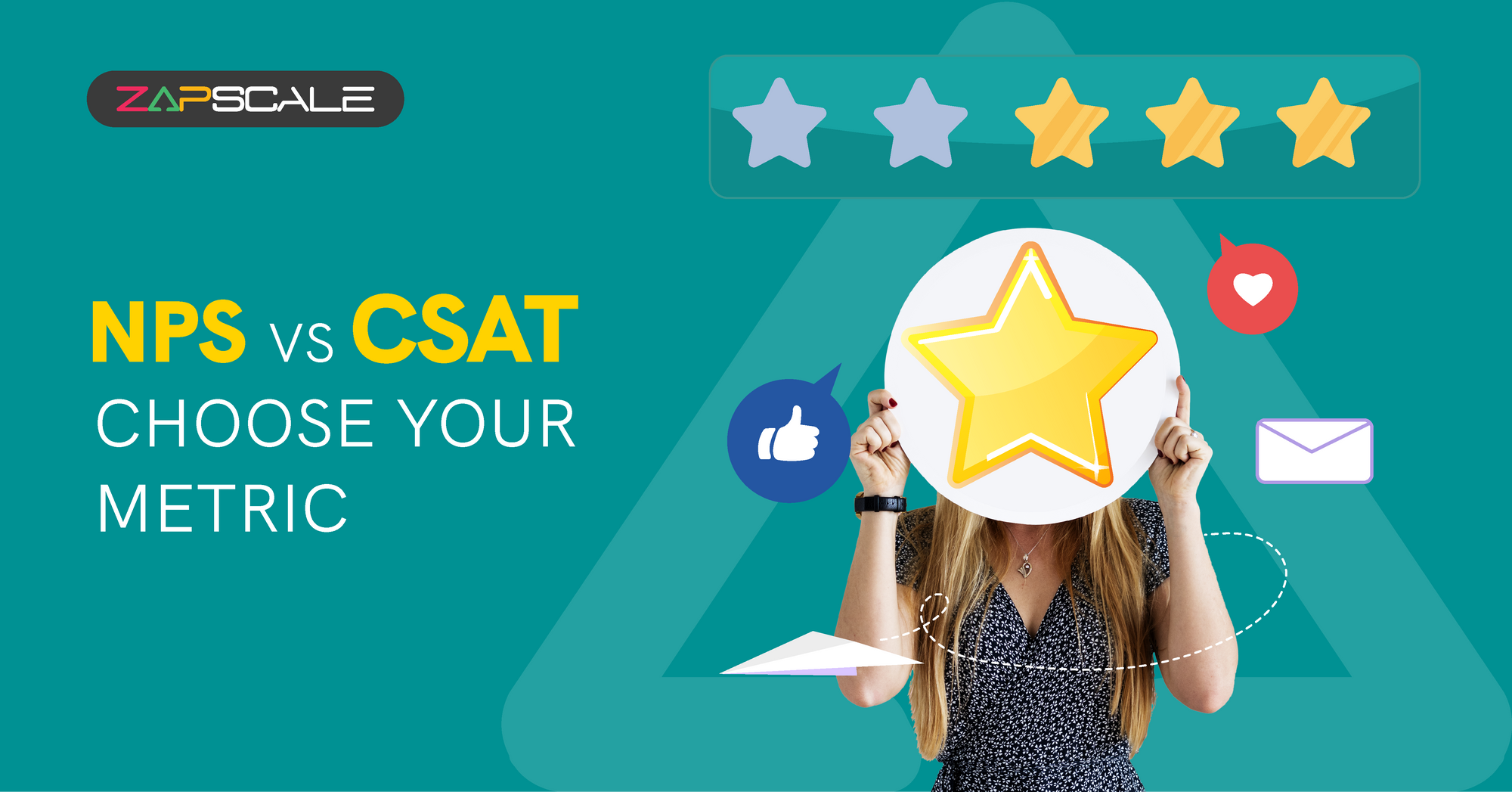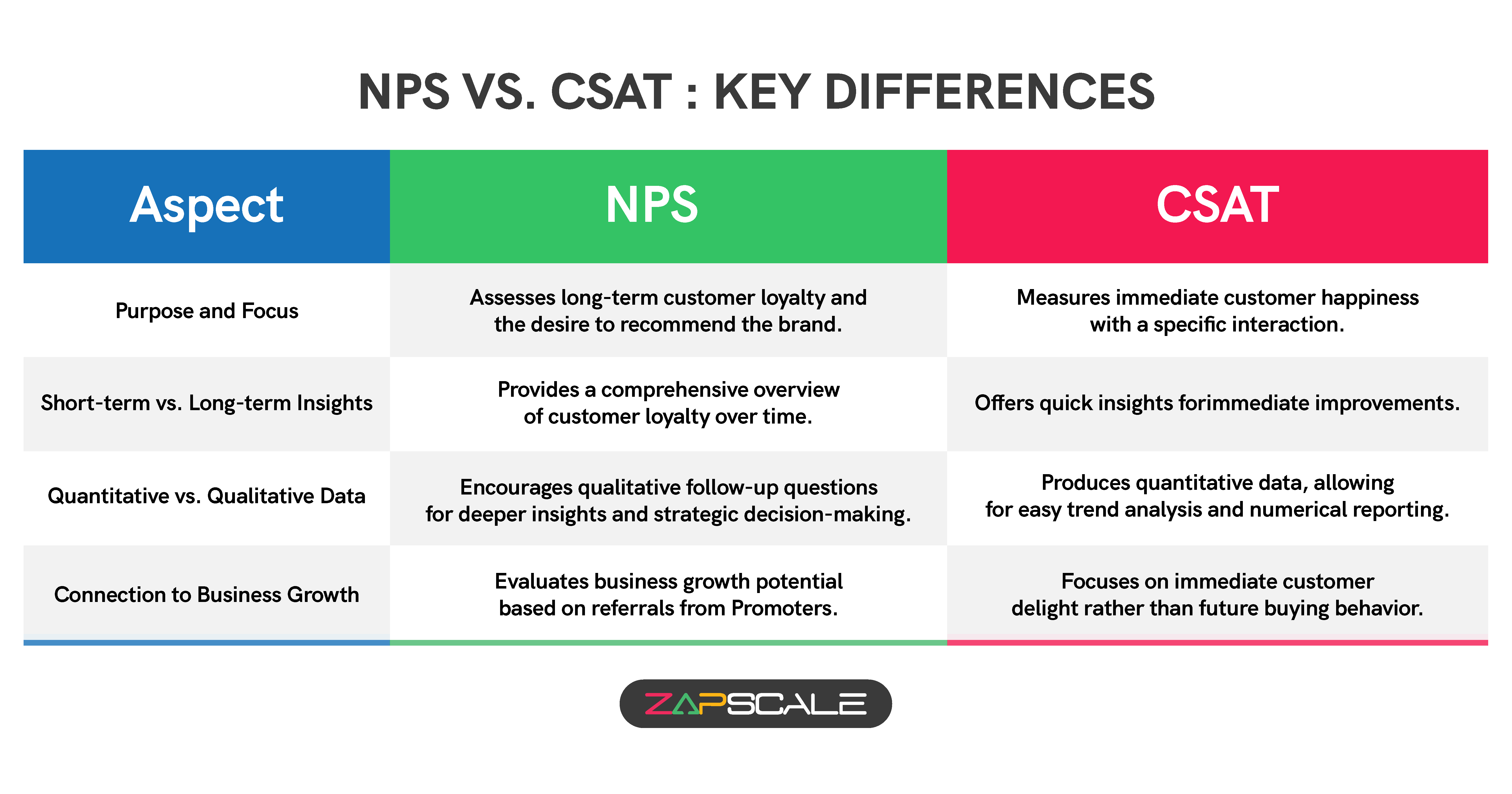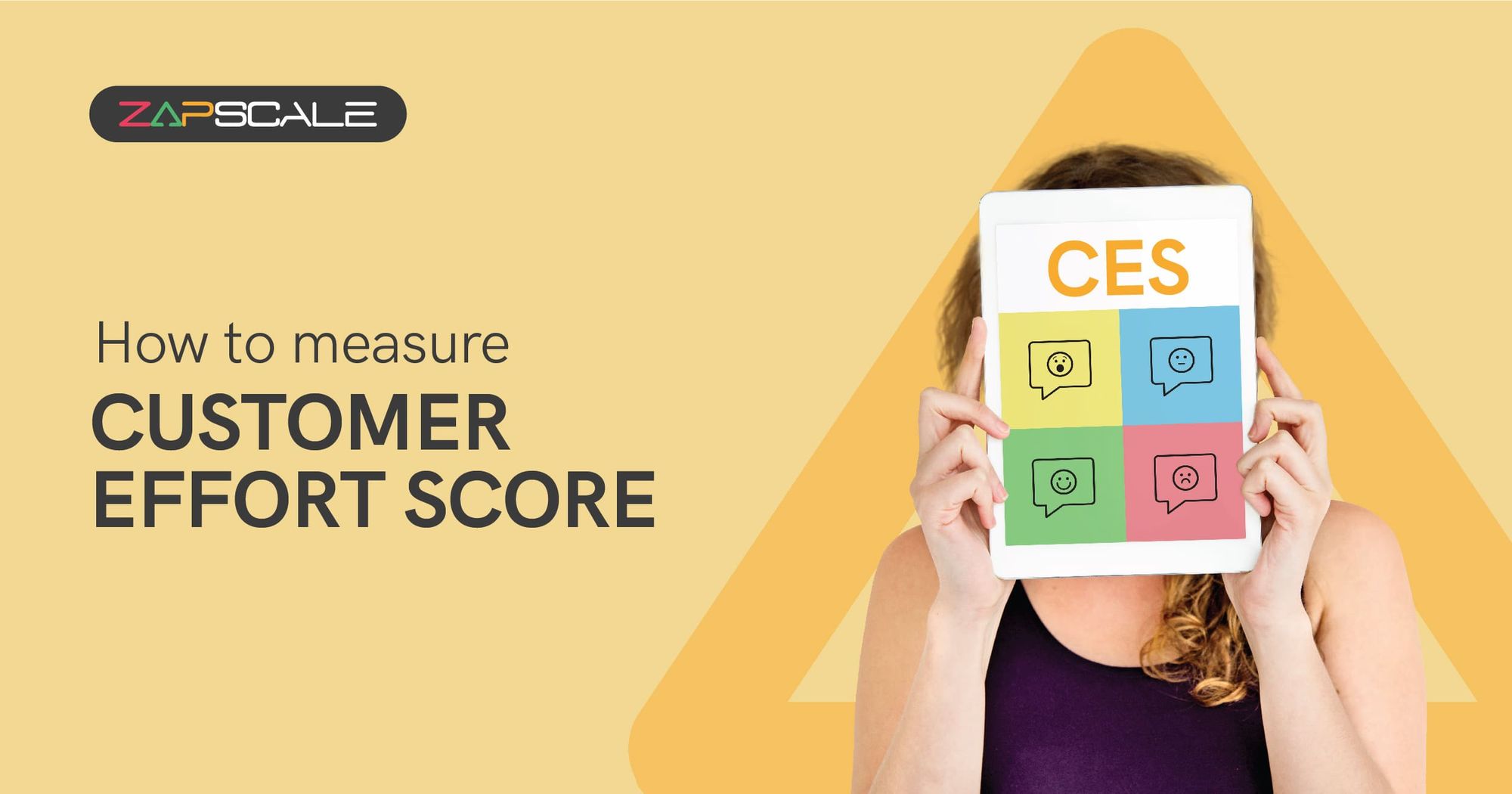CATEGORY > CS Metrics
NPS vs. CSAT: Which Metric Delivers the Best Customer Insights?

In today's competitive market, keeping customers happy is essential for long-term success. To understand your position in the Customer Success arena, you must acquaint yourself with these two important metrics - NPS (Net Promoter Score) and CSAT (Customer Satisfaction Score).
So, what are the differences between NPS and CSAT and why do they matter? Find out by reading further.
Why Retention Matters More Than Ever
Customer retention is more crucial than ever because it is less costly than acquiring fresh customers. Attracting prospective customers requires time and resources, whereas maintaining existing ones fosters trust and loyalty. Furthermore, satisfied customers are more likely to refer your product or service to others, which can lead to organic growth.
Finally, prioritizing retention allows you to develop closer relationships with your customers. This not only improves customer satisfaction but also provides valuable feedback to help you improve your product or service. Overall, focusing on customer retention can help any firm build a solid basis for development and success.
Here are some tried-and-proven strategies for maximizing customer retention and achieving massive SaaS growth.
1. Thorough Customer Understanding
To retain customers, first identify their specific needs and pain points.
Regularly collect feedback via questionnaires, interviews, or analytics. Knowing what customers value most allows you to adjust your product features and services to fit their needs, increasing the likelihood that they will remain loyal.
2. Regular Updates And Improvements
Customers want to feel like they're utilizing a product that adapts to their demands. Regularly update your program to include new features, upgrades, and bug fixes. Communicate these improvements to your users to show how committed you are to improving their experience, which can help reduce churn.

3. Consistent & Personalized Communication
Maintain regular interactions with your customers.
This may include emails, notifications about new features, or tailored check-ins. Consistent communication keeps your brand top of mind and demonstrates that you respect their relationship. It also provides outlets for feedback, allowing you to tailor your products based on their feedback. You must also customize your communication to each customer's specific requirements and preferences. Reach out to customers through several channels (email, phone, and social media) and tailor your conversations with handwritten notes or personalized greetings.
4. Customer Support & Education
Excellent customer service is critical to fostering loyalty. Ensure your team is accessible and educated, with quick response times via chat, email, and phone. Invest in customer education such as webinars and resources to empower people. Customers who feel confident in utilizing your product are less likely to seek alternatives, resulting in longer-lasting relationships.
Why Customer Satisfaction Matters?
Customer satisfaction matters a lot, especially in this competitive SaaS environment. Here’s what customer satisfaction can bring to your business.
1. Improved Business Performance
Monitoring customer satisfaction provides tangible benefits such as increased customer loyalty, improved brand reputation, and increased sales and revenue. Satisfied customers are more inclined to stick with a brand, resulting in recurring business and lower customer acquisition expenses. Positive customer experiences help to improve brand image, attract new users, and create trust.
Additionally, satisfied customers are more likely to promote a product or service to others, resulting in increased sales and revenue.
2. Creation Of A Customer-Centric Culture
Finally, continuously assessing customer satisfaction promotes a customer-centric culture within the business. When organizations prioritize customer feedback and satisfaction, it becomes embedded in their values and processes. This culture transformation pushes all employees to prioritize customer experiences, resulting in a more cohesive approach to service and happiness.
3. Risk Management
Tracking customer satisfaction might help spot potential issues early on, such as falling customer loyalty or negative feedback trends. Businesses can reduce risks and avoid negative repercussions by dealing with issues proactively.
4. Alignment With Business Goals
Evaluating customer satisfaction ensures that corporate initiatives are in line with their demands and preferences. Businesses that prioritize customer happiness can achieve long-term business objectives such as growth, profitability, and market leadership. A customer-centric approach is vital for establishing a long-term and profitable organization.
5. Competitive Advantage
Businesses that value customer satisfaction can set themselves apart from competitors by providing better products, services, and customer experiences. Entrepreneurs can obtain a competitive advantage by continuously exceeding their customers' expectations. Satisfied customers are more likely to make repeat purchases and refer others, which increases the company's lifetime value.
How NPS AND CSAT Define Your Brand's Image?
By understanding NPS and CSAT differences, you can figure out the overall health of your customer base.
Here’s a brief NPS vs. CSAT comparison for your perusal.

1. Purpose & Focus
- NPS: Assesses long-term customer loyalty and desire to recommend the brand.
- CSAT: Determines immediate customer happiness with a specific interaction.
2. Short Term vs. Long-Term Insights
- NPS: Provides a comprehensive overview of customer loyalty over time.
- CSAT: Offers quick insights for instant development.
3. Quantitative vs. Qualitative Data
- NPS: Encourages qualitative follow-up questions, which provide better insights into why customers feel the way they do and can help guide strategic decisions.
- CSAT: Generally produces quantitative data, making it easy to analyze trends and provide numerical reports.
4. Connection To Business Growth
- NPS: Determines business growth based on prospective referrals from Promoters.
- CSAT: Prioritizes immediate delight over guaranteed future purchasing behavior.
Why NPS Matters For Your Business?
Net promoter score is a popular metric in customer experience programs that helps businesses determine customer loyalty. It specifically assesses the likelihood of customers recommending a business to others.
So, how exactly does NPS work?
NPS is based on a single survey question in which customers rate their likelihood of recommending your company on a scale of 0 (not at all likely) to 10 (very likely).
Then, customers are divided into three groups:
- Promoters (9-10): Devoted customers, highly inclined to suggest you.
- Passives (7-8): Slightly satisfied customers but would not necessarily recommend you.
- Detractors (0-6): Moderately satisfied customers, but are hesitant to recommend you.
It's simple to calculate your NPS Score. Your NPS score is the difference between the percentage of promoters and detractors in your customer base.
For example, if 70% of your customers are promoters and 10% are detractors, your NPS score will be 60 (70-10).
The Basics Of CSAT
Customer satisfaction score is an important indicator for determining how satisfied customers are with a company's products or services. It is represented as a percentage, with 100% being the best and 0% being the worst.
When it comes to calculating an accurate CSAT score, companies leverage customer feedback to get a complete picture.
To get customer feedback, brands typically ask questions such as, "How satisfied were you with our product/service?" They encourage customers to score their satisfaction on a scale of 1 to 5, with 1 indicating "Very unsatisfied" and 5 indicating "Very satisfied."
You can easily calculate CSAT, divide the number of satisfied customers (ratings 4 and 5) by the total number of responses, and multiply by 100.
For example, if 80 out of 100 customers are satisfied, your CSAT score must be 80%. CSAT helps businesses understand customer satisfaction and find areas to improve.
When Should We Turn To NPS And CSAT For Critical Customer Insights?
Net Promoter Score is a customer loyalty metric most useful after major transactions. Its ease of use increases response rates, allowing for consistent tracking of customer feedback and influencing strategic decisions to improve loyalty and product positioning.
On the other hand, the customer satisfaction score analyzes satisfaction after specific interactions, like support calls or free trials. Despite the additional effort, it delivers actionable data to identify pain points and enhance services, complementing NPS for a more complete picture of customer behavior.
Unlocking The Value Of Integrating NPS And CSAT
Though both NPS and CSAT are valuable customer satisfaction metrics, they become super effective when combined together. By using both NPS and CSAT in unison, you can get a crystal-clear picture of customer perceptions of your SaaS enterprise. NPS measures overall customer loyalty, whereas CSAT assesses specific interactions. This combination enables organizations to learn not just how customers perceive the brand, but also which specific experiences influence their loyalty.
By tracking these customer satisfaction metrics, organizations can identify areas for development, thereby increasing customer happiness and reducing churn. Together, NPS and CSAT can offer critical insights that enable SaaS companies to remain competitive while effectively addressing customer problems.
To conclude, even though there are differences between NPS and CSAT, they both enable SaaS brands to refine customer satisfaction metrics. When used together, they can deliver crucial insights to enhance customer experience and drive long-term success.
ABOUT THE AUTHOR
Sonali is a social media enthusiast and creative content writer with 3+ years of experience. With a passion for storytelling, Sonali delivers content that inspires, informs, and captivate readers.
Popular from CS Metrics
Quality Content,
Straight To Your Inbox!
Subscribe for the latest blogs, podcasts, webinars, and events!

Write a Blog
If you have experience in CS and
a flair for writing, we’d love to
feature you.
Write to us on
hello@zapscale.com




